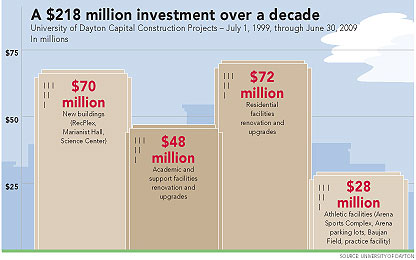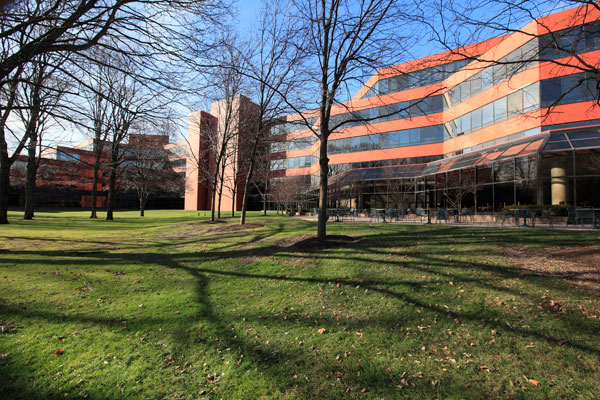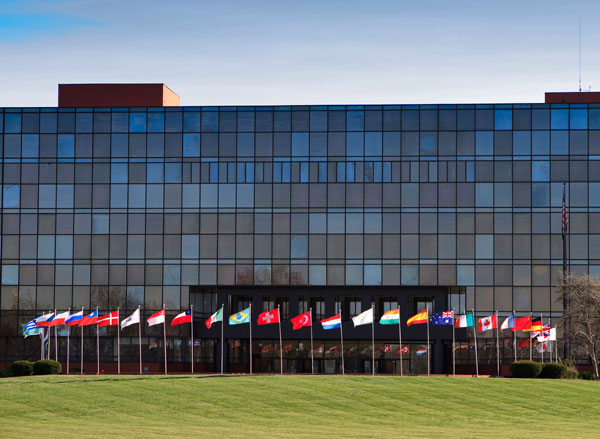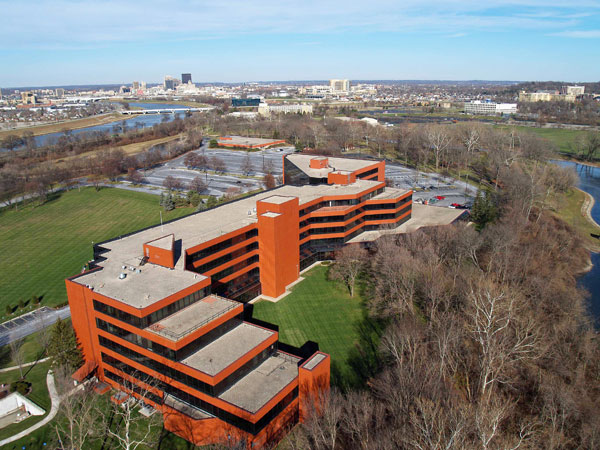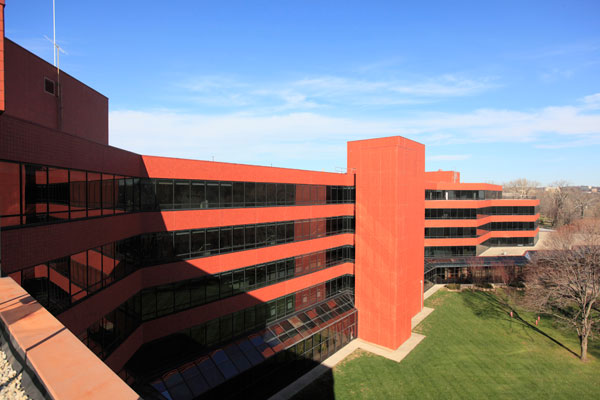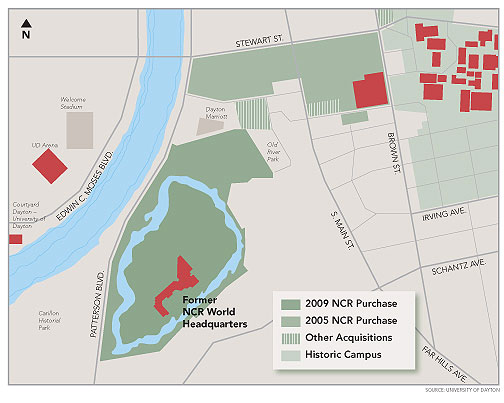News
A History of Growth
The purchase of NCR World Headquarters marks the second blockbuster NCR property purchase for the University of Dayton in the past four years.
In 2005, the University of Dayton acquired a 50-acre parcel of property from NCR Corporation for $25 million — extending the core campus from Brown Street to the Great Miami River. Since then, the University has purchased an additional five acres from NCR.
The University attracted more than $10 million in Clean Ohio Revitalization Fund and U.S. Army Corps of Engineers' funding for environmental cleanup and infrastructure improvements on the original parcel, much of which was considered a brownfield. In December 2007, the Ohio Environmental Protection Agency approved an Urban Setting Designation for the site, a complex but critical process to encourage redevelopment in urban areas.
The redevelopment effort is expected to provide a needed economic boost to Dayton, hit hard by the flight of manufacturing jobs and growing poverty. The land — including 11 choice acres near the waterfront — has largely stood unused since NCR removed its factory buildings from the site during the 1970s. Of the two buildings remaining on the property, the University brought one down and converted the other 477,000-square-foot multi-story former manufacturing facility into a mixture of uses, including new research labs, classrooms and an entire floor housing the Dayton Early College Academy, a nationally celebrated charter high school.
Part of the remediated land has been used for a new landmark gateway to campus, completed this month. The rest will be home to new academic buildings envisioned in the campus master plan, such as a proposed University Center for the Arts.
This fall, the University of Dayton was singled out as the "most innovative of all engaged colleges and universities" nationally in a new survey of the nation's top 25 universities helping to save America's cities from blight. The 25 academic institutions on the "Saviors of Our Cities" list were selected because of their positive impact on their urban communities, including both commercial and residential activities such as revitalization, cultural renewal, economics, and community service and development. The University of Dayton topped all Catholic universities and tied for No. 2 overall.
"There's great faith, great trust in the University of Dayton. There are expectations that we can be an economic driver for the community," said Daniel J. Curran, president. "We're taking a cautious, collaborative approach to ensure that any development on the property meets both academic and community needs. The property also provides a land bank for the University's future development."
The University of Dayton and NCR have enjoyed a 125-year relationship. According to historical accounts, Julia Patterson told her sons, John and Frank, that she would allow them to invest the small family fortune to start a cash register business only if Brother Maximin Zehler, S.M., endorsed the business proposition. Zehler, principal of the school that would eventually become the University of Dayton, recognized the potential of the cash register and even arranged to purchase some of the family's land, providing the infant business with needed capital and the school with land for expansion.
Founded in 1850 by the Society of Mary (the Marianists), the University of Dayton has grown into the largest private university in Ohio and a top-tier national Catholic research university.
